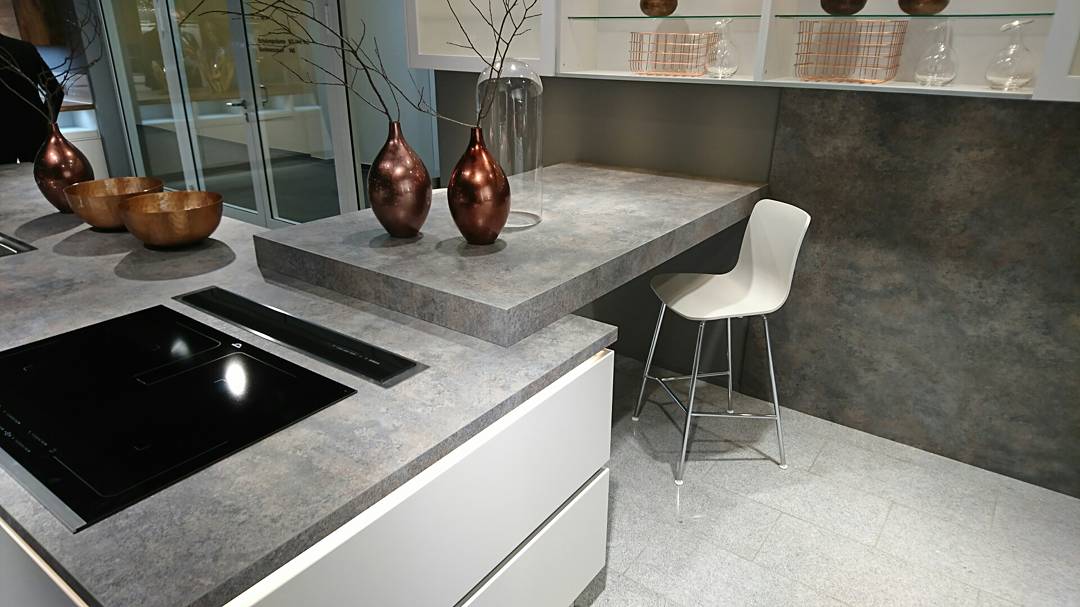Kitchen Island – Is your kitchen big enough?
May 25, 2018 10:55 amFollowing on from our recent top 5 kitchen design tips post, we have another all important question that needs answering.. is your kitchen big enough for an island?
Does size really matter? I’ll let you be the judge of that. Every kitchens shape and size is unique this is hard to confirm a definitive answer with a simple yes or no. There are many options when it comes to an island, firstly the size is very flexible and a good designer will know what size will work in what spaces, here at Inhaus Design, we like to fill spaces with big islands to really make a bold statement. Although there is a fine line between making a statement and over-filling a space!
Below we aim to give you a few simple tips to see how incorporating an island may change your kitchen.
Room Size & Flow
This isn’t exactly rocket science, having a huge space to work with allows limitless options when it comes to size and configuration of your kitchen island. On the flip side, fitting an island into a smaller kitchen takes a bit more thinking, as a designer I love surprising clients with what we can achieve in small spaces! (although some take a bit of convincing that it is the right thing to do!). But the first thing we look at after the size is the flow of the room:
Room flow – when we talk about the ‘flow’ of a room, its the way we envisage it working, considering entrances to the room, windows where natural light comes in, and where people gravitate to when they enter a room. We often go into clients homes and in the kitchen area there isn’t a focal point for people as they enter, which often leads to people loitering in the working area and getting in the way.
Example 1
Take a look at this typical U shaped kitchen kitchen layout at the top right photo, this room is roughly 3.2 metres by 3.2 metres. (Photo 1)
In this, the entrance area leads directly into the workable space, and the focal point is directly in the working area. To us, this is an unsociable setup, and whilst someone is working in there any guest will be in the way, so they’ll tend to leave.
Example 2
Inputing an Island into this design would be logical. It would shorten the working route taken between the appliances in the kitchen and give guests somewhere to gravitate too. Check out the second photo down on the right. (Photo 2) Here, we have simply:
- Removed the units on the left hand side to create an L Shape
- Condensed the working area so that the journeys between appliances are shorter
- We have also introduced the hob to the island, this allows whoever is cooking in the kitchen to still very much remain part of the socialisation between the guests at the seating area
- To top it all off, the total storage space has increased!
Practicalities to consider
Dimensions
The flexibility of the size of the island will vary, in a smaller room the island size can’t afford to be too big. Having a choices on different sizes and depths of units is key here to get the optimum island.
Incorporating a hob into an island
When doing this it is essential that a good island extractor is installed. These come in various different forms – in my the island extractors that hang down are quite an eyesore and aren’t particularly practical. I am 6 foot 2 and hit my head on most of these styles of extractors which is where my resentment for these started!
The ideal scenario is to incorporate a ceiling extractor which sits flush in the ceiling, check an example of one of these in this recent project! These styles of extractor are very un-obtrusive, provide great lighting and are generally quite a nifty feature. They are also remote controlled!
Seating
What I find with seating is that people are often over-estimate as to how much space is needed. For a simple stool space on a breakfast bar on an island, 30cm of space to tuck a stool under is plenty, any more is a luxury! cramming too many seats side by side is also a no no. Allowing at-least 50cm per stool is the minimum recommended – however, if your other half has the tendency to eat whilst flailing their elbows, I’d probably recommend a bit more.
Lastly, if you have any questions on the above or need some design advice, don’t hesitate to leave a message here on the Contact page.
Categorised in: inhaus News




